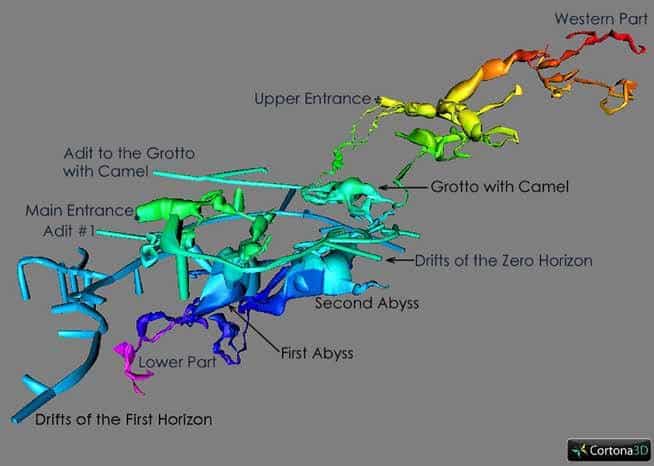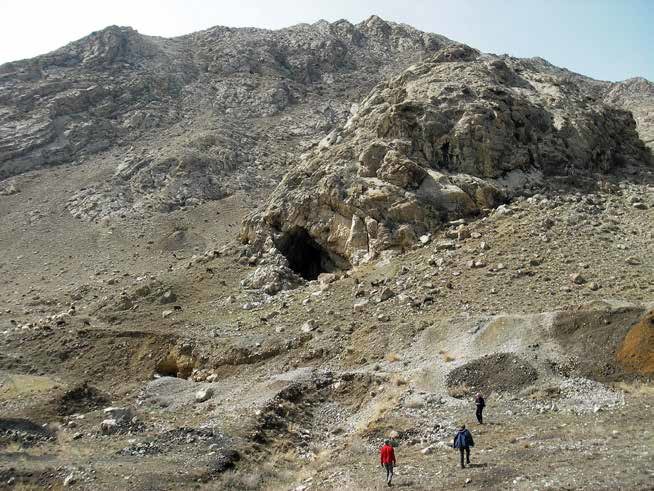Kani-i-Gut Cave
Kani i Gut Cave
Kan-i-Gut cave is known to the locals also as Zauk-Kur and the Mine of Death. The cave is located in the Southwest Kyrgyzstan in Batken region, on Sary-Too massif and lies in the ore-bearing rocks of hydrothermal metasomatic deposit of iron, silver and lead. Kan-i-Gut has cultural and historical value of the region as it can tell us a lot of the mining culture of the past.
The cave gained its fame in the 10-11th centuries AD during the era of the Great Silk Road. At that time, silver and other metals and minerals were mined in this cave. Abu Ali ibn Sina, who was very famous in Europe and known better as Avicenna, talked about this particular cave in his writings. According to various sources, underground work in the cave was ongoing for staggering 1500 years. It is believed that originally the mining was started by Arabs, then continued by Chinese miners and much later Soviet political prisoners during World War 2.
Today its exact dimensions are not completely known. Nevertheless, in 2017 speleologists identified the length of the cave as 6 km. How much more space is hidden from human eyes remains a mystery. The cave is not that far from the Sary too fossils area so it can be visited the same time.
Unfortunately the cave is also not far from the location where there have been tensions and fights between the Kyrgyz and Tajiks so we cannot currently recommend anyone visiting the region.
We also want to emphasize that Kan i Gut cave, as any cave in Central Asia, should be only visited together with the local guides with expertise in the local cave conditions and necessary safety measures.


Image 1 source: Kan-i-Gut cave mine in Kyrgystan. Mine Caves/Grotte di Miniera. Memorie Instituto Italiano di Speleologia. S. II. 28, 2013, pp. 79-95. In: Mine Caves. Proc. Second Int. Symp. on Mine Caves. Iglesias 27-29/04/2012
Image 2 source: A. Markov / Il Monte Kan-i-Gut e l’ingresso principale della Grotta-miniera
Sights near Kani i Gut
Page updated 11.1.2024